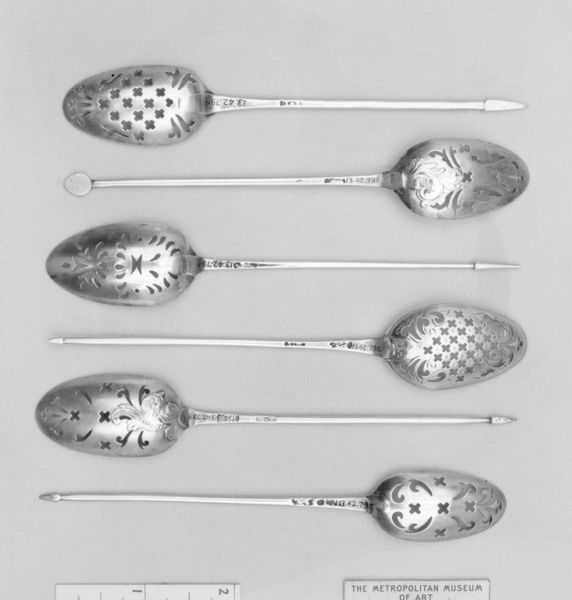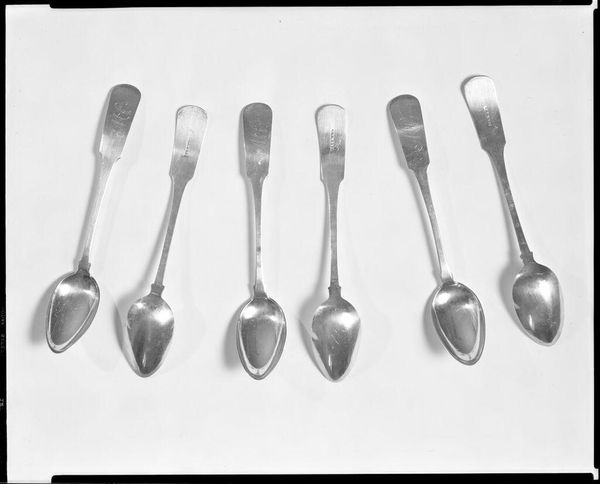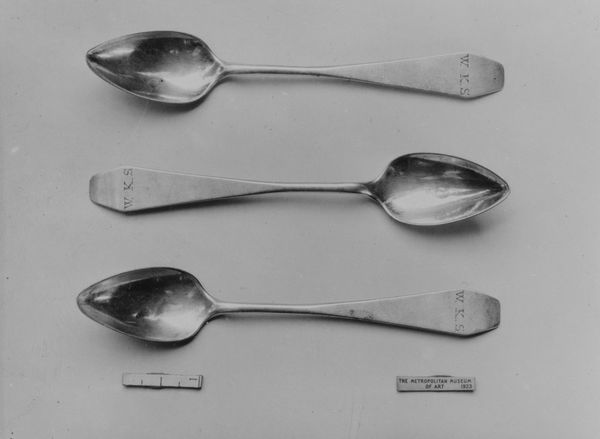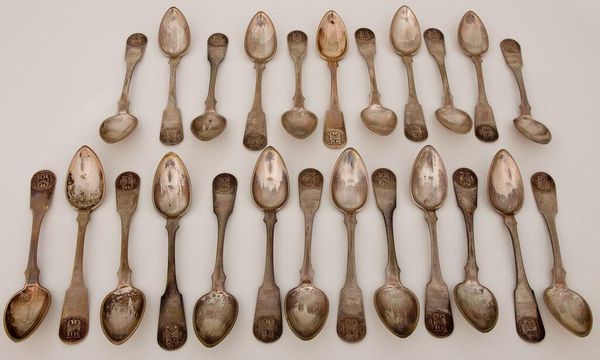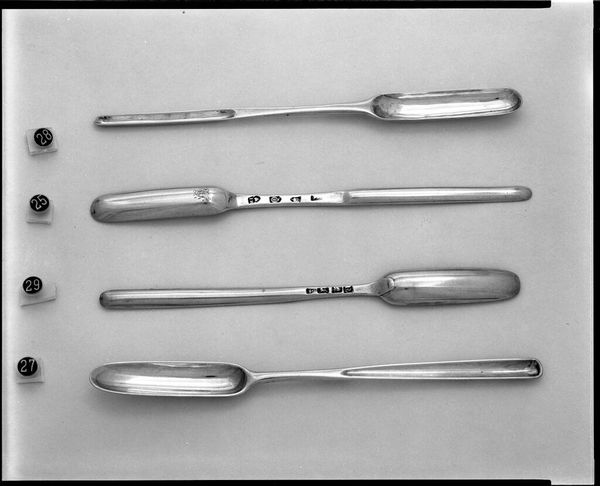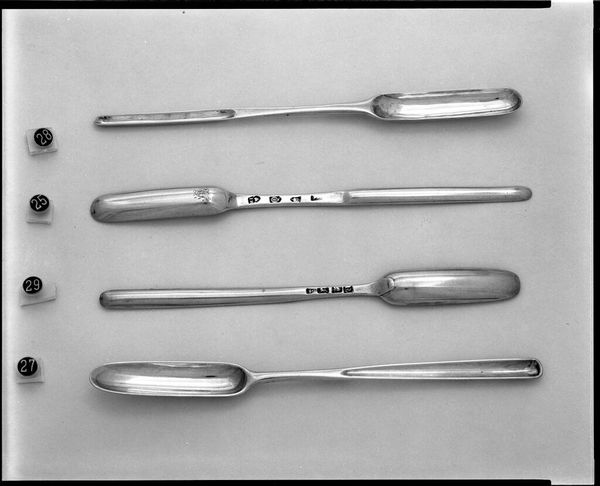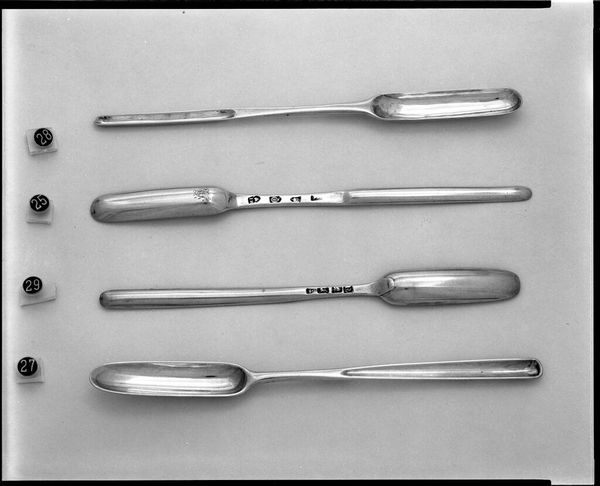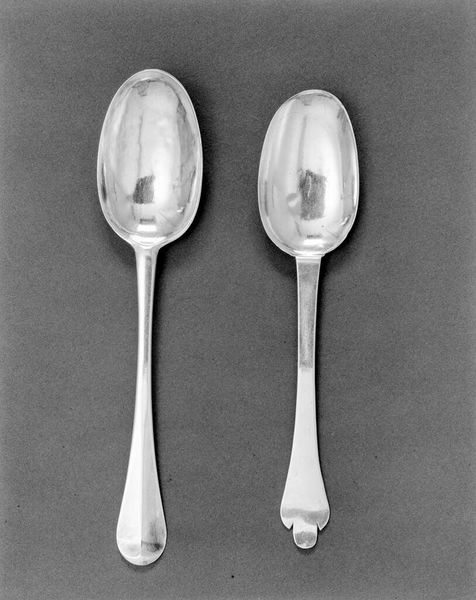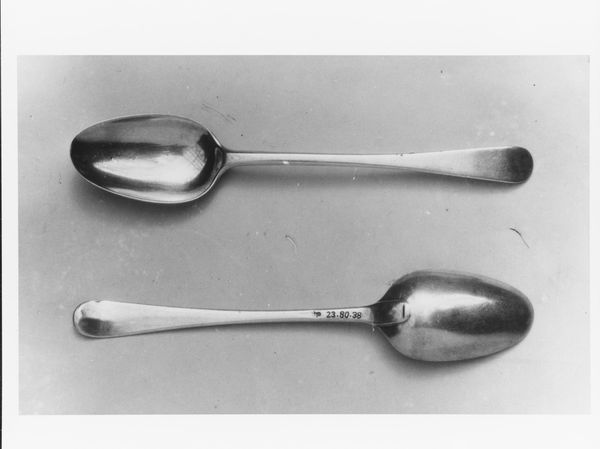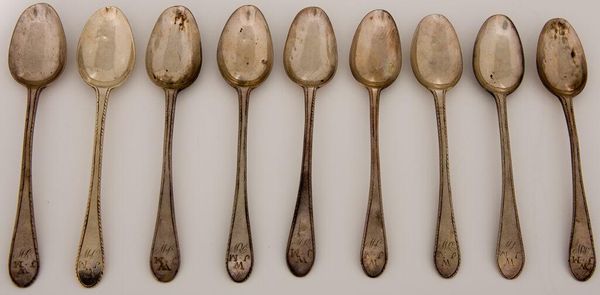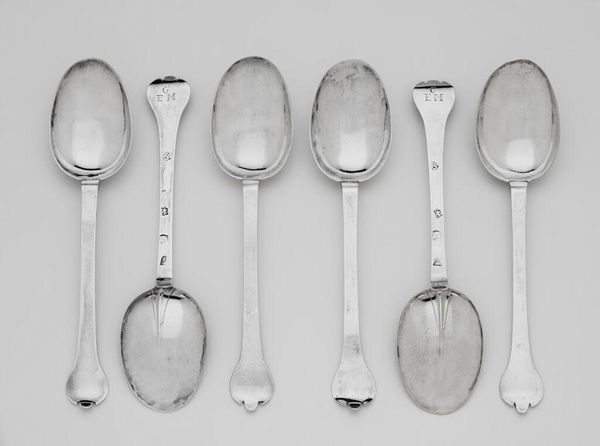
Souvenir spoon with profile head of Queen Victoria and finial in form of St. Paul's Cathedral 1897 - 1898
0:00
0:00
silver, metal, sculpture
#
silver
#
metal
#
sculpture
#
decorative-art
Dimensions: Length: 4 3/4 in. (12.1 cm)
Copyright: Public Domain
Curator: This is a souvenir spoon, crafted from silver between 1897 and 1898 by Saunders & Shepherd. The piece, now residing at the Metropolitan Museum of Art, features a profile head of Queen Victoria and a finial shaped like St. Paul's Cathedral. Editor: My first thought is power, subtly but distinctly expressed. The spoon is a modest object, yet the combined imagery speaks to imperial reach and authority. It almost feels like a miniature scepter, designed for everyday use. Curator: Indeed. The late 19th century was a peak period for the production of souvenir spoons. They catered to a growing middle class with increased leisure time and access to travel, becoming both mementos and markers of social status. Silver as a material signified wealth and refinement, far removed from the functional simplicity of, say, a wooden spoon. Editor: And St. Paul's, rendered in miniature, symbolizes not only the grandeur of London but also the enduring spiritual and temporal power concentrated there. The effigy of Victoria reinforces this; she's presented as a timeless figurehead. Silver, in this context, becomes a material of historical preservation. Curator: Absolutely. The craftsmanship reflects industrial processes refined for mass production, yet retaining decorative art sensibilities. Consider the chasing and repoussé work creating Victoria's profile – skilled labor adapting to industrial efficiency. Its mass consumption belies the refined, even luxurious, quality of its material composition and the relatively involved process involved in its manufacture. Editor: So it's a tangible encapsulation of the Victorian era's values – empire, industry, and aspirational social mobility, all bundled into an everyday object. One could track how commemorative and heraldic imagery in such functional items reflects the construction of collective memory and a sense of national identity. Curator: Precisely. Examining the production and distribution channels can illuminate the social and economic landscapes of the time, whereas scrutinizing the spoon's iconography gives a glimpse into prevailing ideologies. Editor: Seeing this spoon makes you realize how powerfully everyday objects become vehicles for symbolism. They're almost invisible communicators, constantly reinforcing cultural narratives through familiar forms. Curator: It really showcases how seemingly simple artifacts can tell multilayered stories about history, craft, and society. Editor: It's quite impressive how a simple spoon carries such profound and persuasive images!
Comments
No comments
Be the first to comment and join the conversation on the ultimate creative platform.

